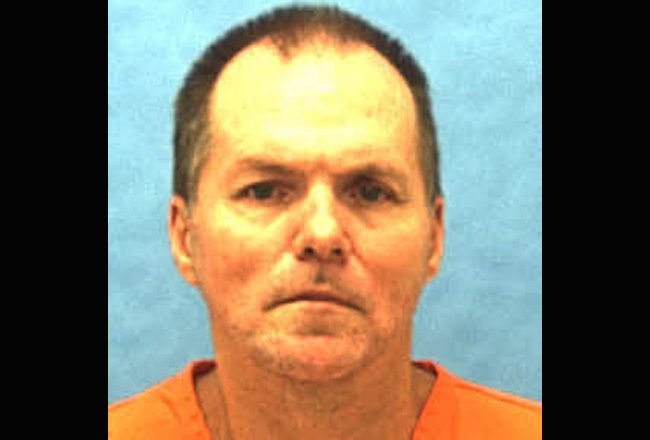
A Death Row inmate scheduled to be executed this month continues to mount challenges to the state’s newly adopted lethal-injection procedure — never before used in Florida or any other state — but Attorney General Pam Bondi’s lawyers are urging the Florida Supreme Court to reject the latest attempt.
Gov. Rick Scott ordered Mark James Asay to be executed on Aug. 24, essentially ending a hold on the state’s death penalty caused by a series of court rulings. Asay is scheduled to be put to death more than 19 months after Scott originally signed a death warrant in his case.
Since that January 2016 warrant, the Florida Department of Corrections has switched the formula used in the triple-drug lethal injection procedure, called a “protocol.”
In the new protocol, Florida is substituting etomidate for midazolam as the critical first drug, used to sedate prisoners before injecting them with a paralytic and then a drug used to stop prisoners’ hearts.
Asay’s lawyer, Marty McClain, failed to convince a Duval County judge that the new protocol is unconstitutional because etomidate can cause pain after being injected and can result in “myoclonus,” or involuntary movements, such as twitches or jerks.
But this weekend, McClain — who wants the state to use the old drug formula, or switch to a single-drug execution protocol — asked the Supreme Court to accept a “declaration” from anesthesiologist John Robert Sneyd regarding the hazards of using etomidate as part of the triple-drug lethal injection cocktail.
“Excitatory movements such as myoclonus may compromise electronic brain monitoring and render this method of patient monitoring ineffective for the person attempting the killing to be confident that the subject of the execution attempt is unconscious,” Sneyd wrote.
But Assistant Attorney General Charmaine Millsaps asked the Supreme Court to strike the declaration, arguing that it is procedurally barred because it was never heard by Duval County Circuit Judge Tatiana Salvador before she ruled against Asay’s challenge to the lethal-injection protocol late last month.
“This (Supreme) Court cannot consider factual matters that were not presented to the trial court. The declaration is an attempt to circumvent the trial court’s fact-finding role,” Millsaps wrote in a three-page motion filed Monday.
In a separate filing Monday afternoon, McClain also continued to accuse Bondi’s office of denying Asay the right to due process by hoodwinking his lawyers into agreeing to a delay in a review by the U.S. Supreme Court.
Bondi “utilized her statutory power to bring about an execution date that diminished” Asay’s chances of having the U.S. Supreme Court review his case, McClain wrote in the 30-page brief.
McClain has argued that Bondi misrepresented the status of the case when she gave the governor a go-ahead for scheduling the execution.
After McClain filed an appeal with the U.S. Supreme Court, known as a “writ of certiorari,” this spring, Bondi sought a 30-day extension in the case.
McClain said he interpreted Bondi’s request for a postponement, to which he agreed, to mean that the state would not seek a new execution date for Asay until after the U.S. Supreme Court ruled in the appeal this fall.
Without the 30-day extension, the U.S. justices could have taken up Asay’s appeal before their summer hiatus, which started on June 28 and lasts until October, McClain argued.
Instead, the court gave Bondi until July 5 to file her response to Asay’s request.
Two days before the deadline, Bondi certified to Scott that Asay was eligible for execution. After Scott signed Asay’s death warrant on July 3, setting the execution date for Aug. 24, Bondi quickly filed an objection to Asay’s appeal in the U.S. court.
Since a death warrant has been issued in Asay’s case, it would take five U.S. Supreme Court justices to order a review, instead of the four that would have been necessary to grant a petition in the absence of a pending execution date, McClain wrote in a letter to the governor last month.
But Bondi’s lawyers, in court filings, maintain that the governor has “unfettered discretion” to sign death warrants and is not obligated to wait until the federal appeals have been resolved.
Asay’s execution would be the first carried out in Florida since a January 2016 U.S. Supreme Court decision, in a case known as Hurst v. Florida, that found Florida’s death penalty sentencing system was unconstitutional because it gave too much power to judges, instead of juries.
The sentencing process has since been revised, but the death penalty has been in limbo Florida following the Hurst decision and a series of subsequent state court rulings.
Asay was convicted of the 1988 killings of Robert Lee Booker and Robert McDowell in downtown Jacksonville.
–Dara Kam, News Service of Florida





























Steven says
I wonder if his victims suffered in anyway? I say we go ahead with his execution…….
Veteran says
These murderers didn’t care what horrible fear and pain their victims felt so why do we care so much? Lethal injection is just like being put under for surgery only you don’t wake up. We should all be lucky enough to go that way.
Gkimp says
Break out old sparky!
r&r says
We don’t want to hurt the poor guy so how about the old firing squad?
Stanley Wolak says
We should give all the comfort we can to James Asay poor guy,he only killed two people!!!
beachcomberT says
Dragging out the criminal justice process for this case for nearly 30 years is a form of torture, both for the perpetrator and the families of the victims who have been denied closure.